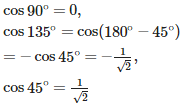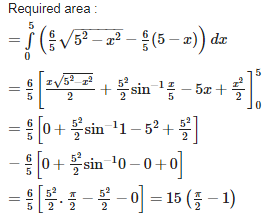CBSE 12TH MATHEMATICS - Online Test
Q1. If E, F and G are events with P(G) ≠ 0 then P ((E ∪ F)|G) given by
Answer : Option C
Explaination / Solution:
P(EUF/G) ==
= +-
= P (E|G) + P (F|G) – P ((E ∩ F)|G)
Q2. If sin A + cos A = 1, then sin 2A is equal to
Answer : Option D
Explaination / Solution:
1 = 1 + Sin 2A
so, Sin 2A = 0
Hence A = 0
Q3. If f(x) = x | x | ∀x∈R, then
Answer : Option B
Explaination / Solution:
Also, f'(x)
,
Therefore f'(x) exists at all
Further, f'(0) =
Q4. The number of arbitrary constants in the general solution of a differential equation of fourth order are:
Answer : Option C
Explaination / Solution:
4 , because the no. of arbitrary constants is equal to order of the differential equation.
Q5.
If a line makes angles with the x, y and z – axes respectively, find its direction cosines.
Answer : Option D
Explaination / Solution:
If a line makes angles with the x, y and z – axes respectively, then the direction cosines of this line is given by :

Q6.
A square matrix A = is called a lower triangular matrix if for
Answer : Option A
Explaination / Solution:
Q7. Area bounded by the curves satisfying the conditions is given by
Answer : Option A
Explaination / Solution:


Q8. In a LPP if the objective function Z = ax + by has the same maximum value on two corner points of the feasible region, then every point on the line segment joining these two points give the same
Answer : Option C
Explaination / Solution:
In a LPP if the objective function Z = ax + by has the same maximum value on two corner points of the feasible region, then every point on the line segment joining these two points give the same maximum value . If the problem has multiple optimal soliutions at the corner points, then both the points will have the same (maximum or minimum)value.
Q9. The void relation ( a subset of A x A ) on a non empty set A is :
Answer : Option C
Explaination / Solution:
The relation { }⊂ A x A on a is surely not reflexive.However ,neither symmetry nor transitivity is contradicted .So { } is a transitive and symmetric relation on A.


